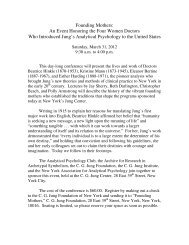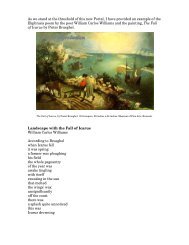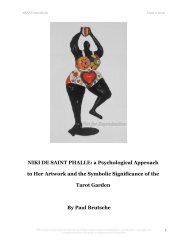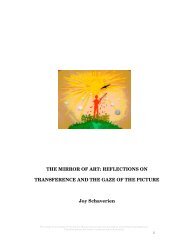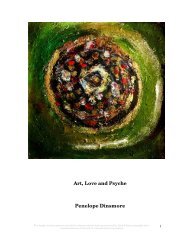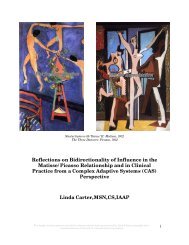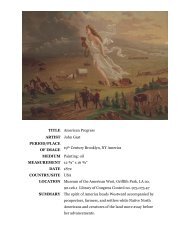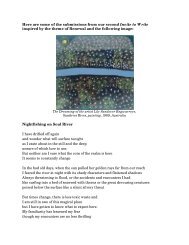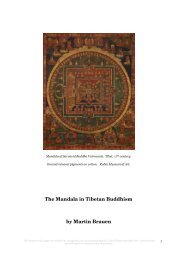Pictorial Space throughout Art History: Cézanne and ... - ARAS
Pictorial Space throughout Art History: Cézanne and ... - ARAS
Pictorial Space throughout Art History: Cézanne and ... - ARAS
You also want an ePaper? Increase the reach of your titles
YUMPU automatically turns print PDFs into web optimized ePapers that Google loves.
<strong>ARAS</strong> Connections Issue 2, 2012<br />
The effect of a color depends on its tone (is it red or yellow or green?); its<br />
warmth (red-orange is the warmest tone, blue-green the coldest); its saturation<br />
(how much is it diluted with white, gray or black?); its brightness (how intensely<br />
does it reflect light?); <strong>and</strong> its extent (how much surface does it cover?). Color<br />
creates tensions between planes which must also be balanced (plate 15). If the<br />
colors of a plastic painting are reduced to shades of gray (try looking at the black-<br />
<strong>and</strong>-white reproduction in plate 1) the painting may still be plastic. Contrasts of<br />
brightness <strong>and</strong> extent, together with the form, may be enough.<br />
The final picture breathes: air circulates through the space which<br />
surrounds the forms (fig. 11). The forms seem to exp<strong>and</strong>. They look massive <strong>and</strong><br />
permanent. Every structure is related (by location, tone, contrast, proportion,<br />
repetition, or direction of movement) to every other structure. Nothing is<br />
included unless it is called for. The picture is an organic unit. Roger Fry (3) said<br />
of <strong>Cézanne</strong>'s l<strong>and</strong>scapes:<br />
His profound sense of a continuous plastic rhythm penetrates <strong>throughout</strong><br />
a whole composition. By some mysterious power he was able to give the<br />
mountains, the houses, the trees, all their solid integrity, to articulate<br />
them in a clearly felt space <strong>and</strong> yet to sustain a rhythm of plastic<br />
movement almost unbroken from one end of the canvas to the other |28|.<br />
A l<strong>and</strong>scape by <strong>Cézanne</strong> <strong>and</strong> his motif<br />
By comparing <strong>Cézanne</strong>'s l<strong>and</strong>scape The Sainte Victoire from Beaurecueil,<br />
(Plate 2) with a photograph of his motif you can watch him constructing pictorial<br />
space.<br />
<strong>Cézanne</strong> selected elements from the motif to serve as planes in his<br />
painting. The hillside in the right foreground <strong>and</strong> the high mountainside in the<br />
The images in this paper are strictly for educational use <strong>and</strong> are protected by United States copyright laws. 21<br />
Unauthorized use will result in criminal <strong>and</strong> civil penalties.



